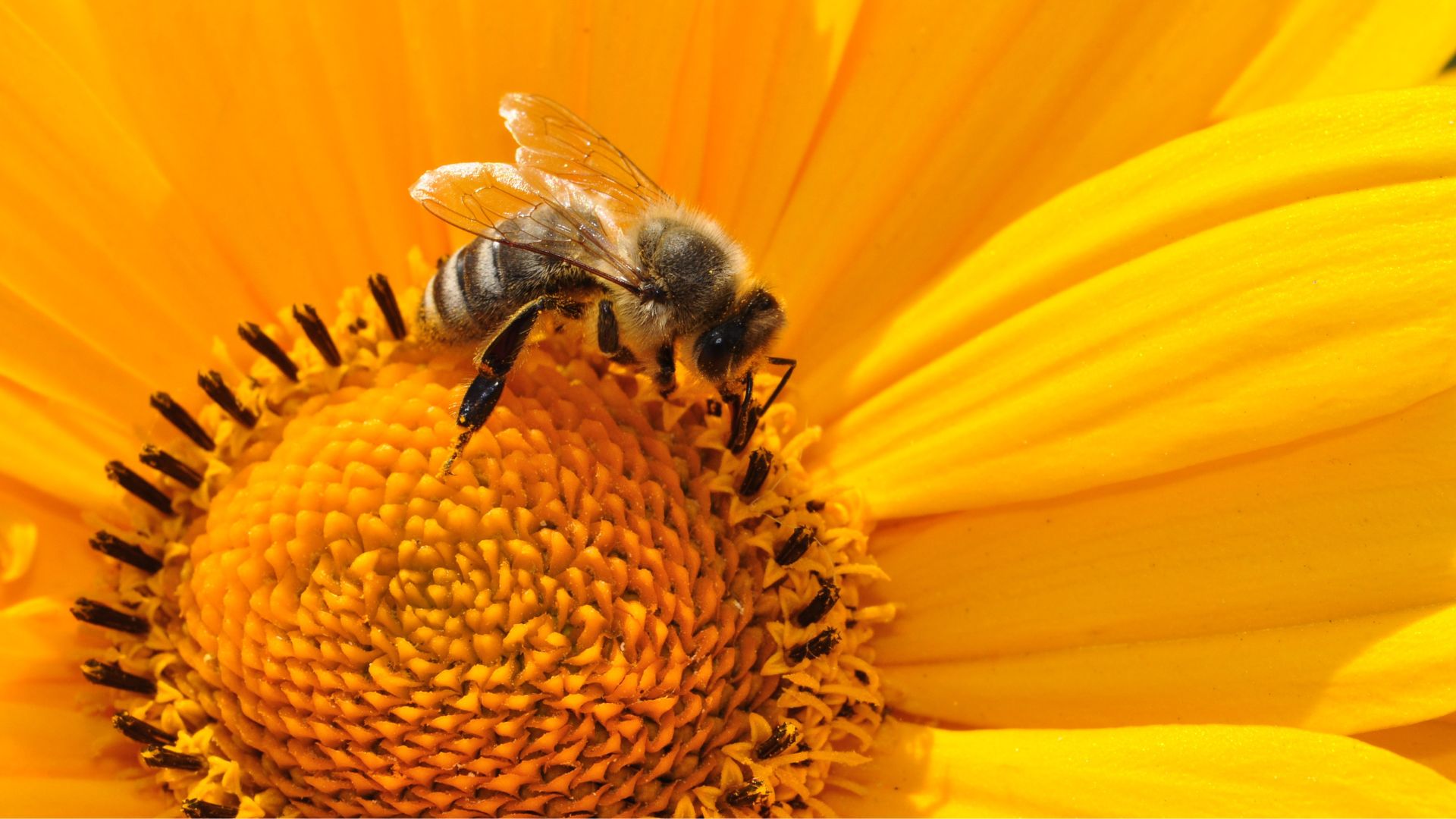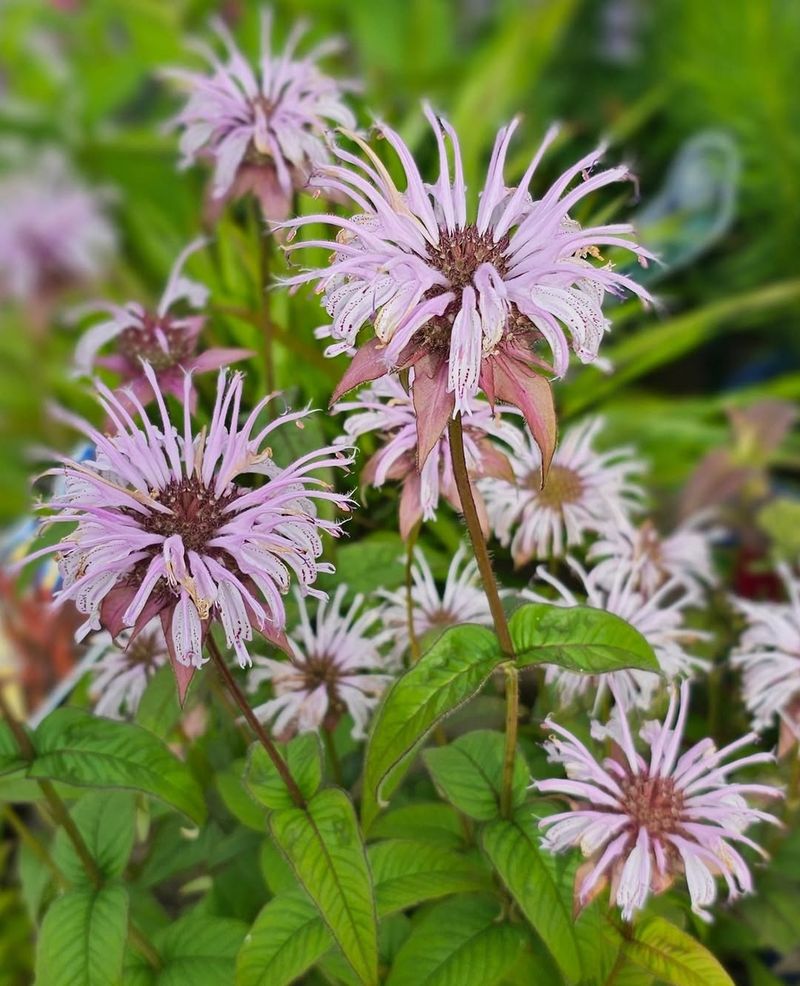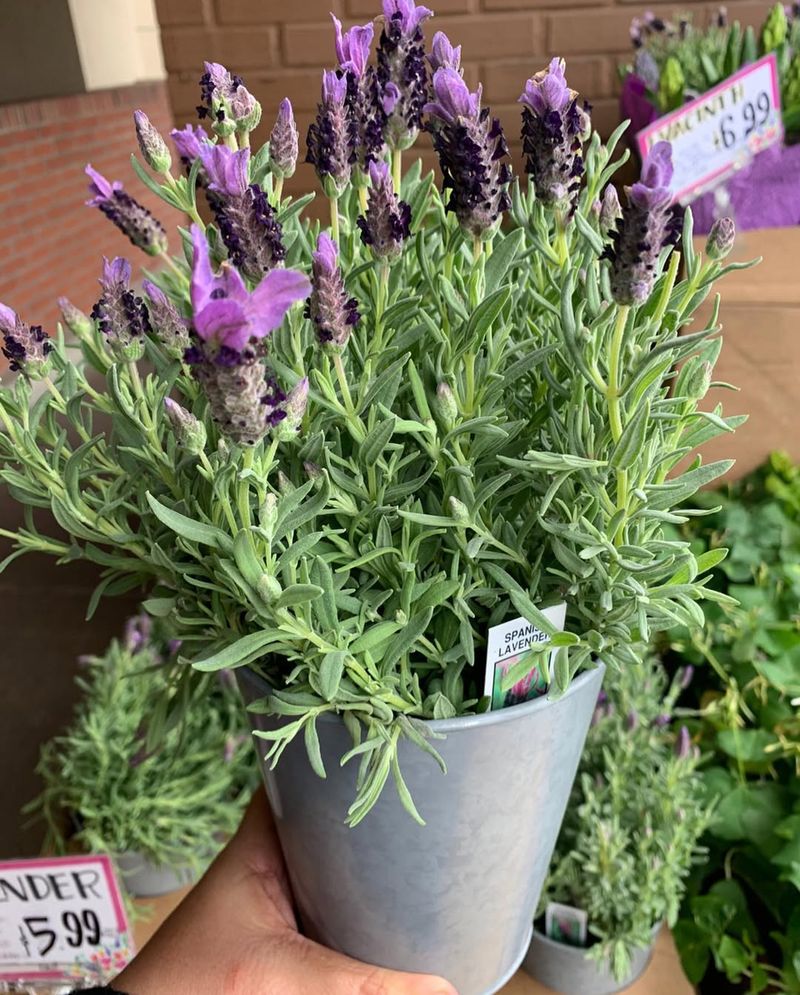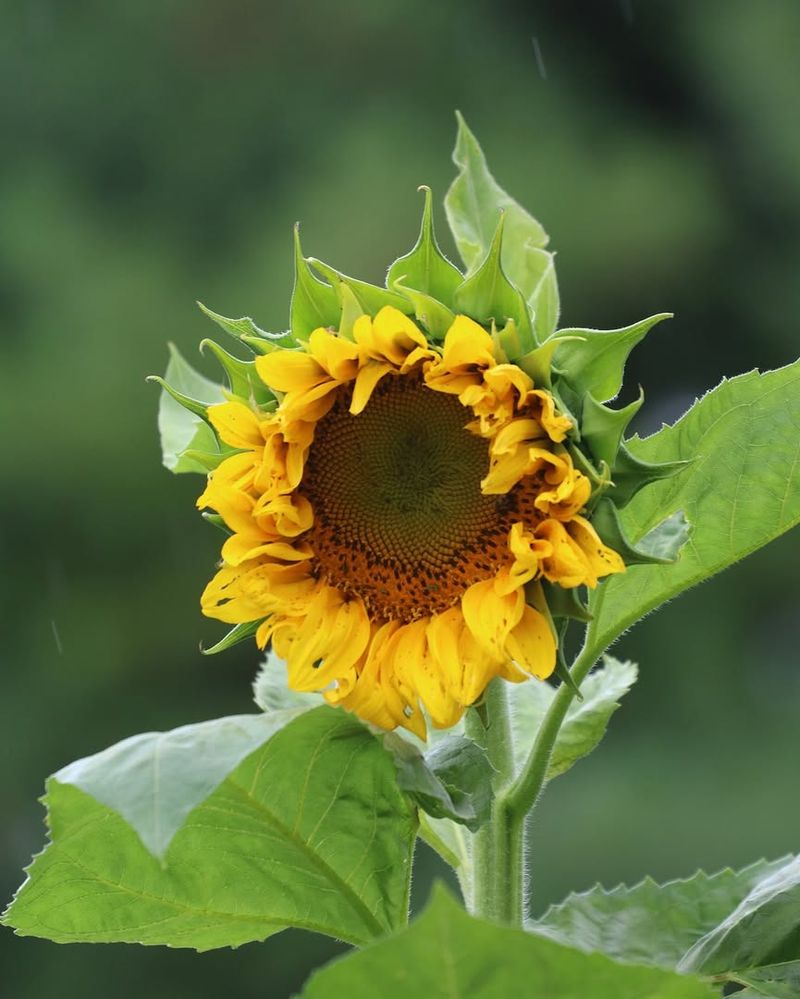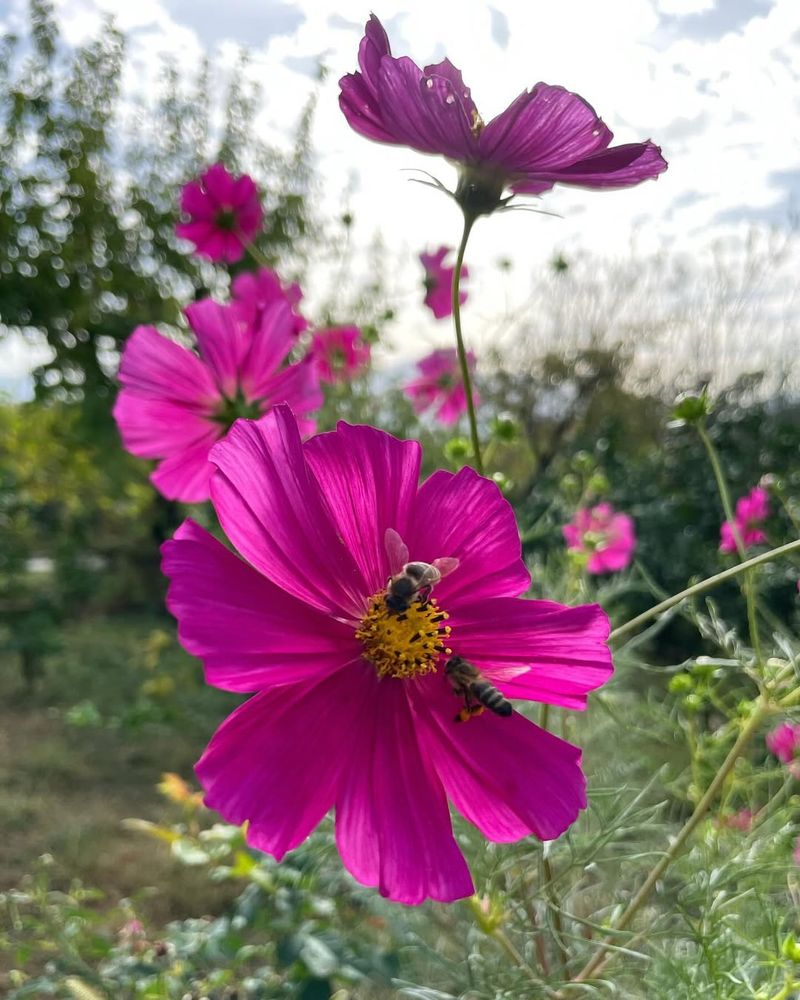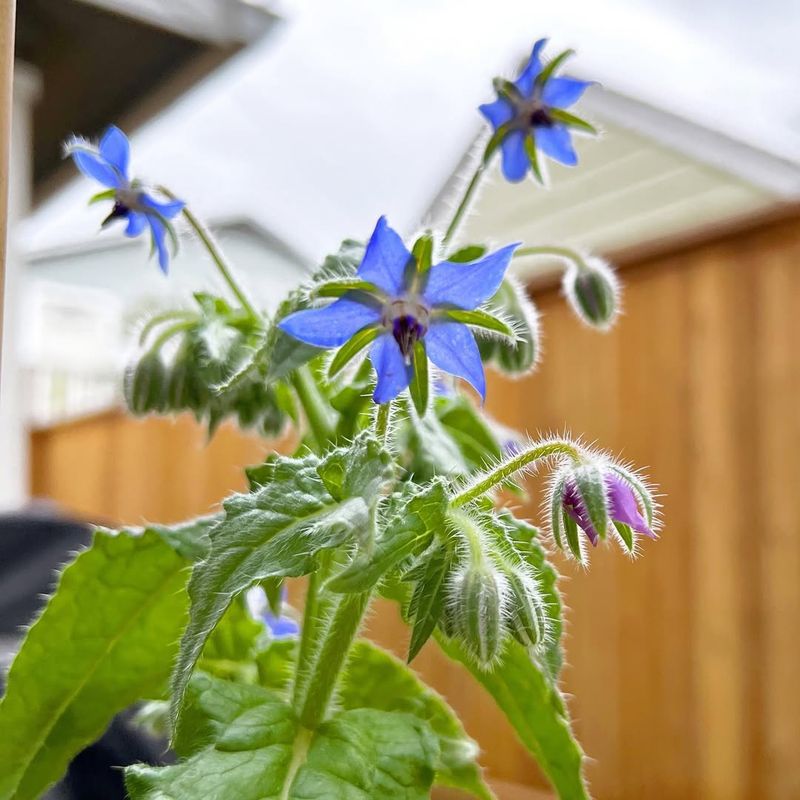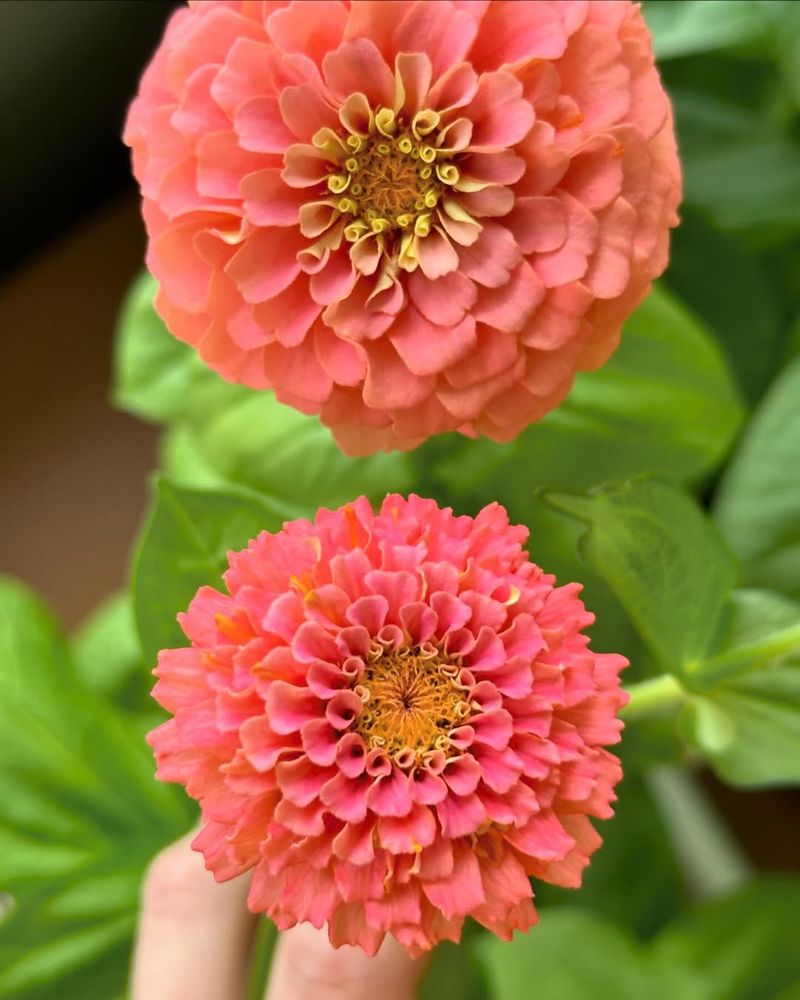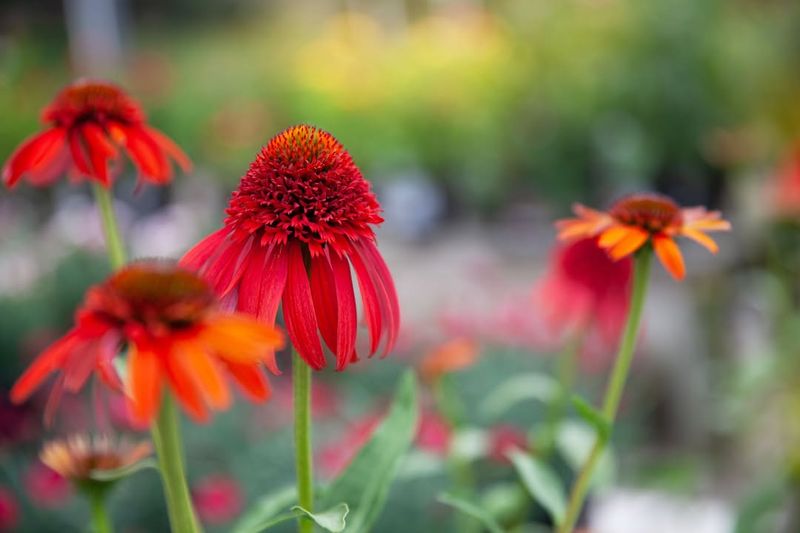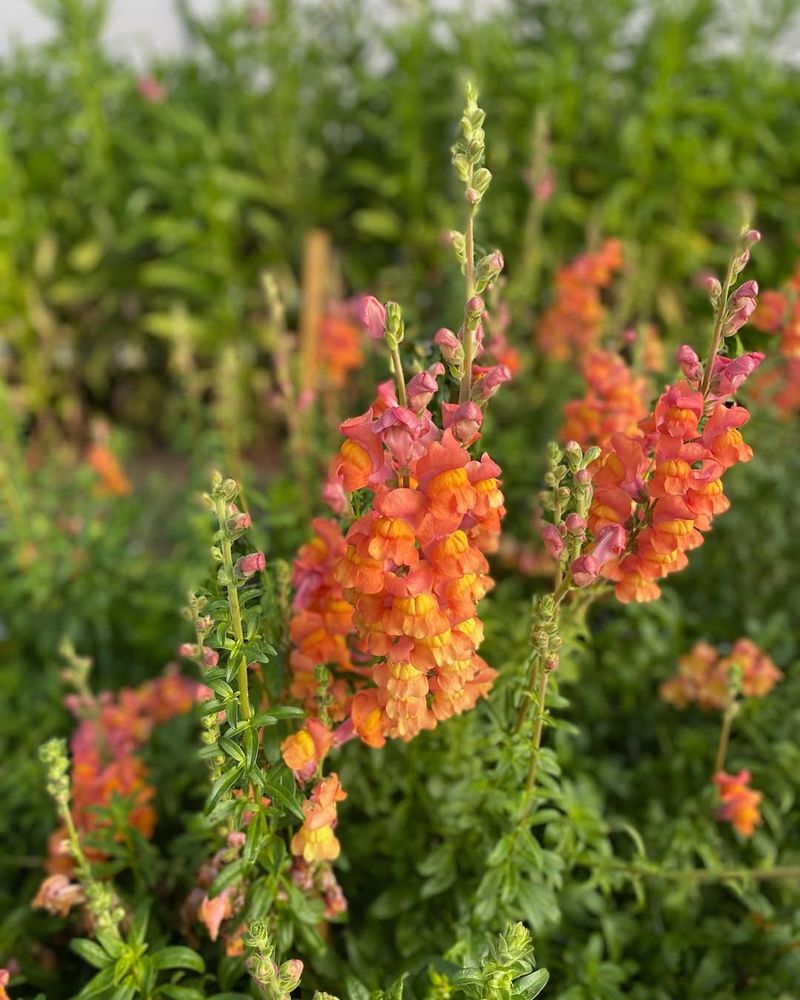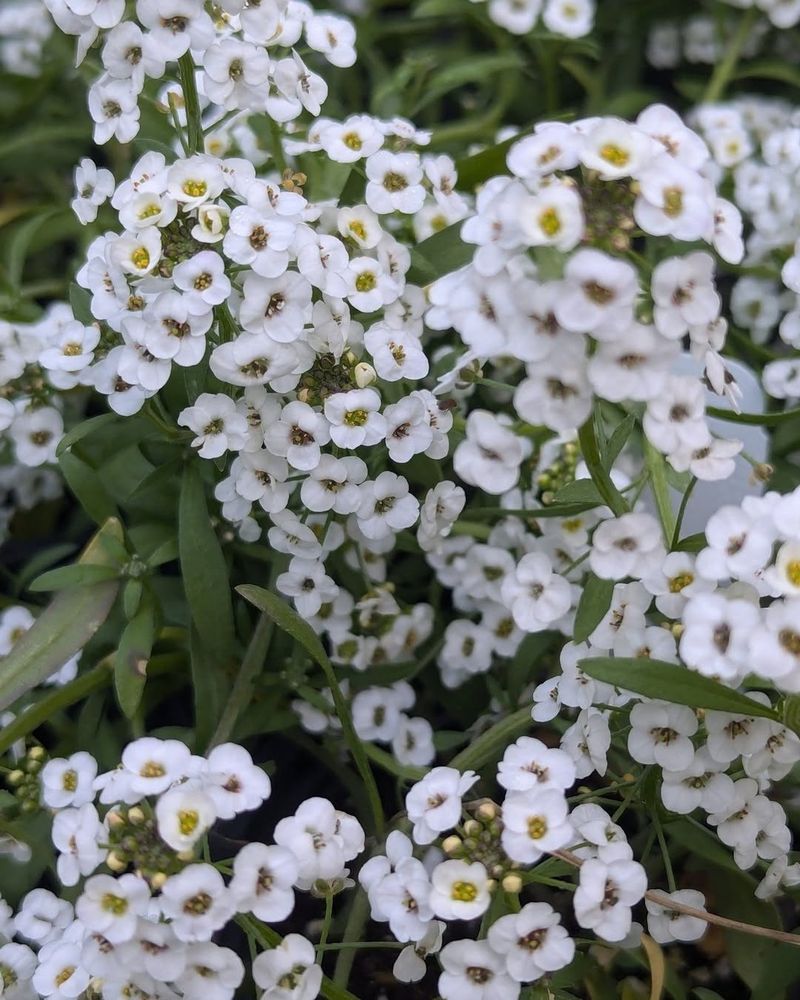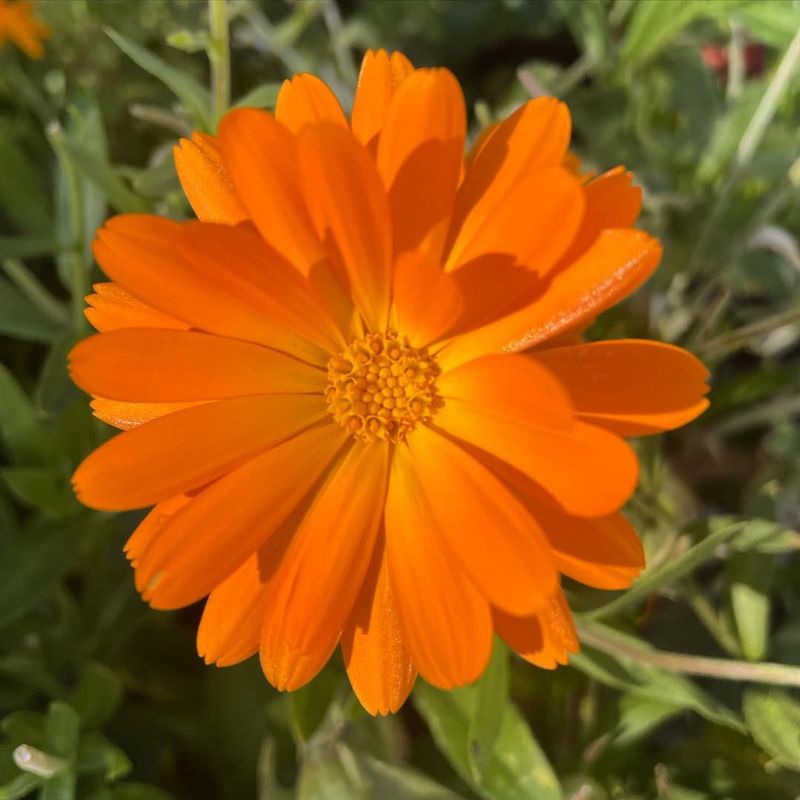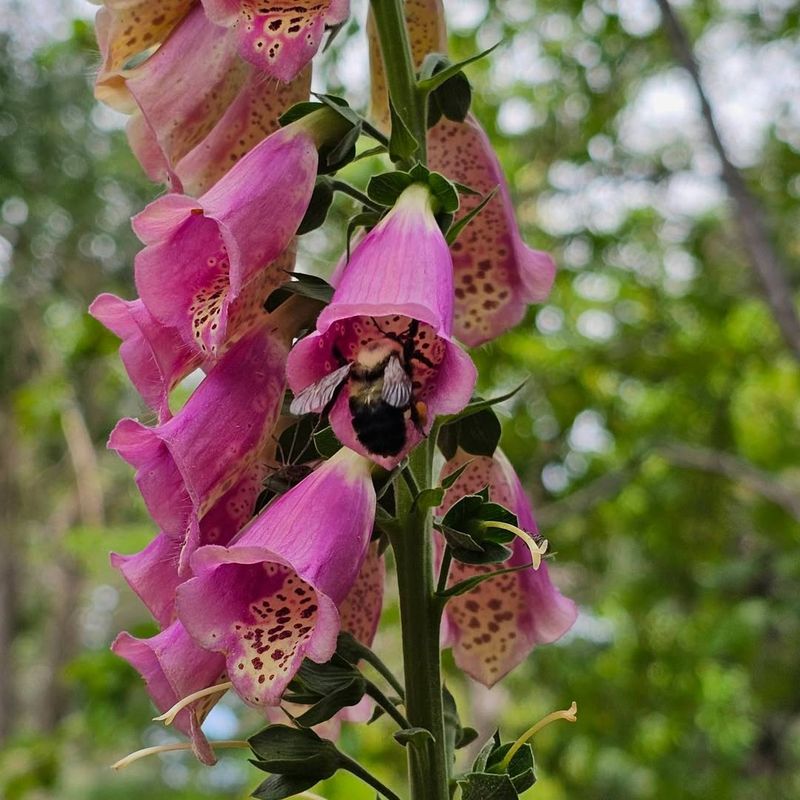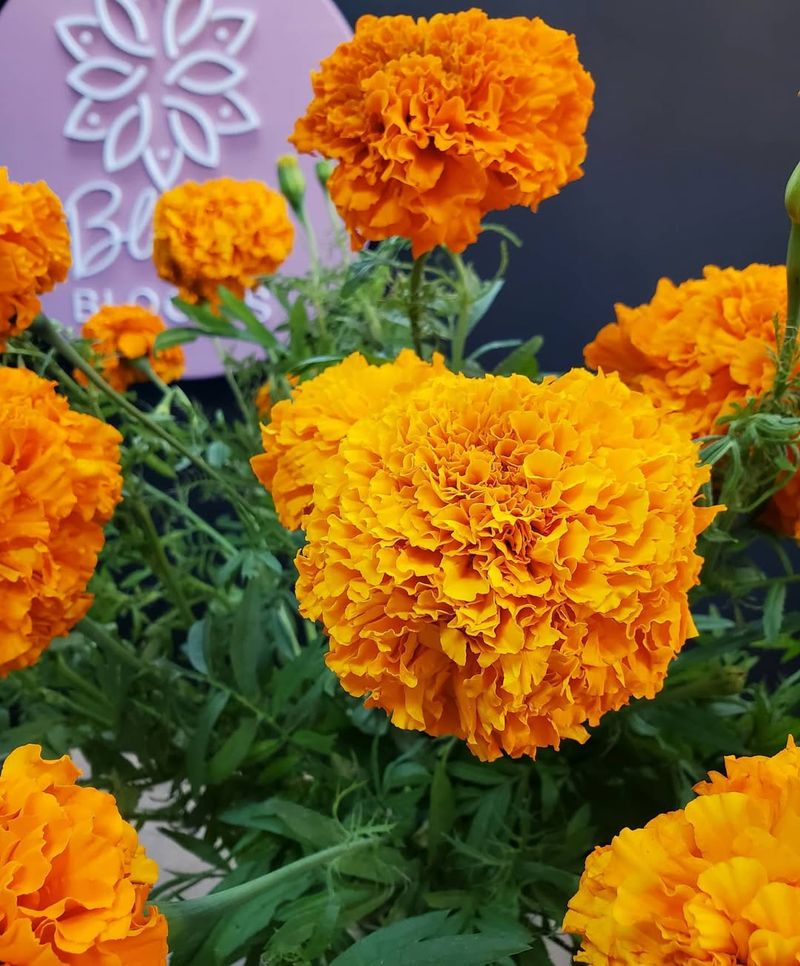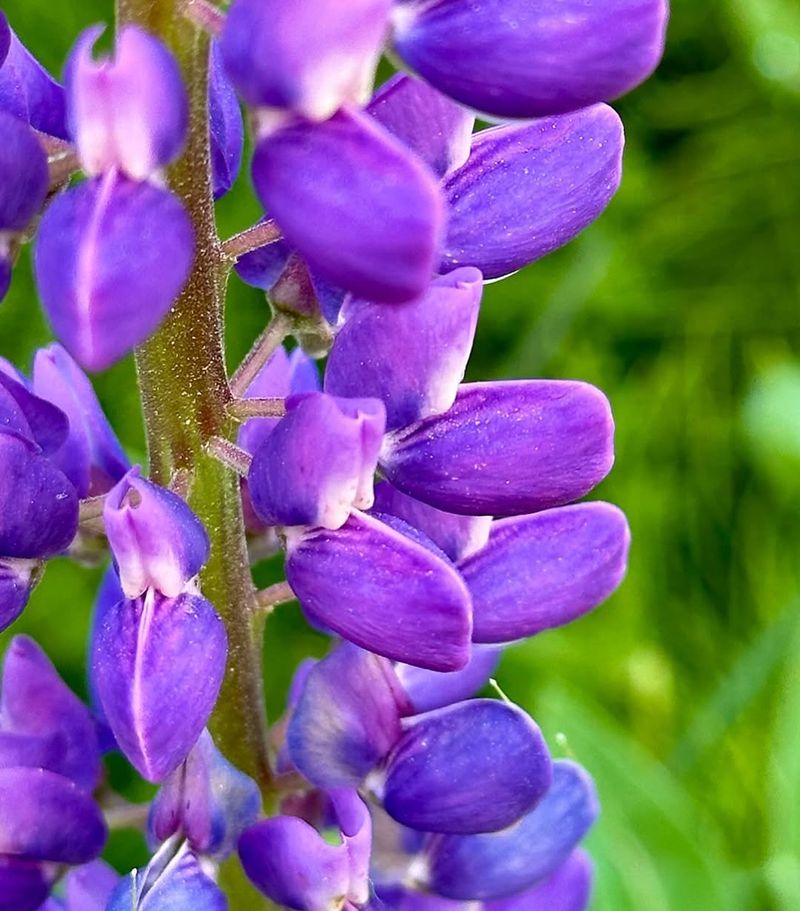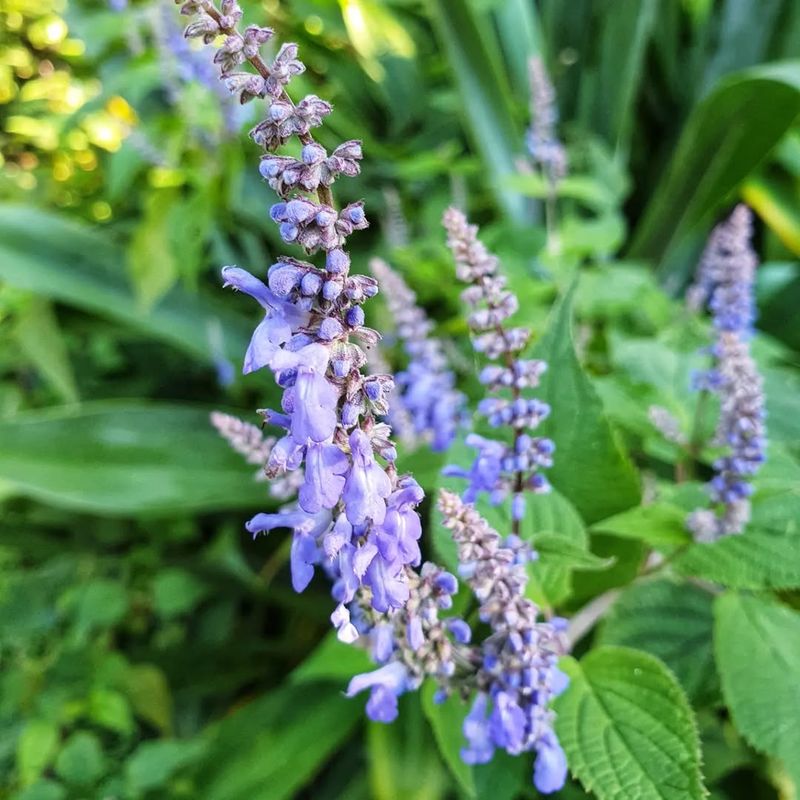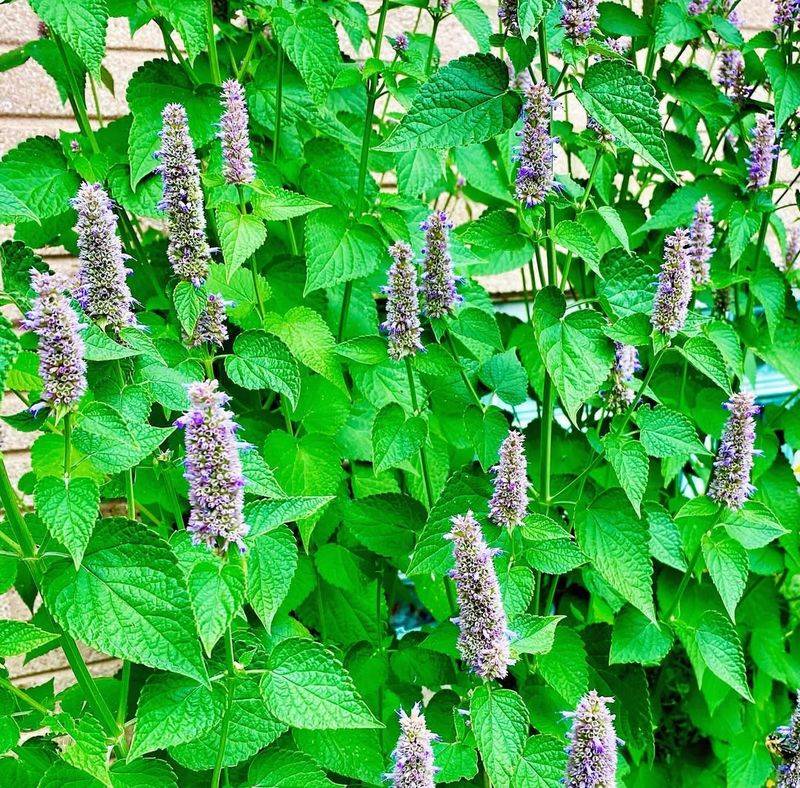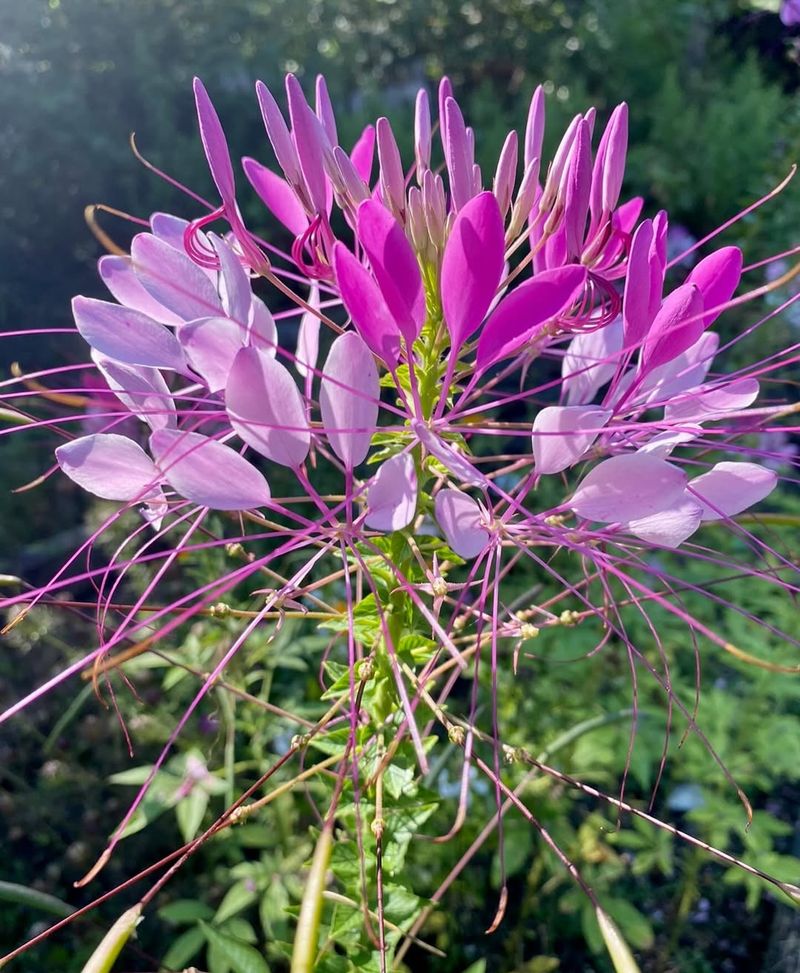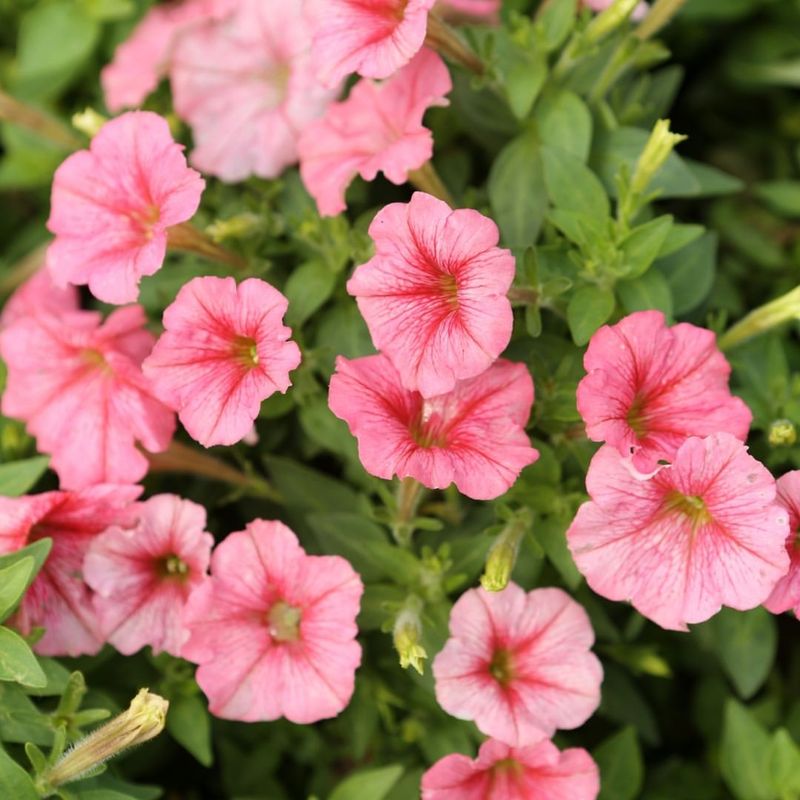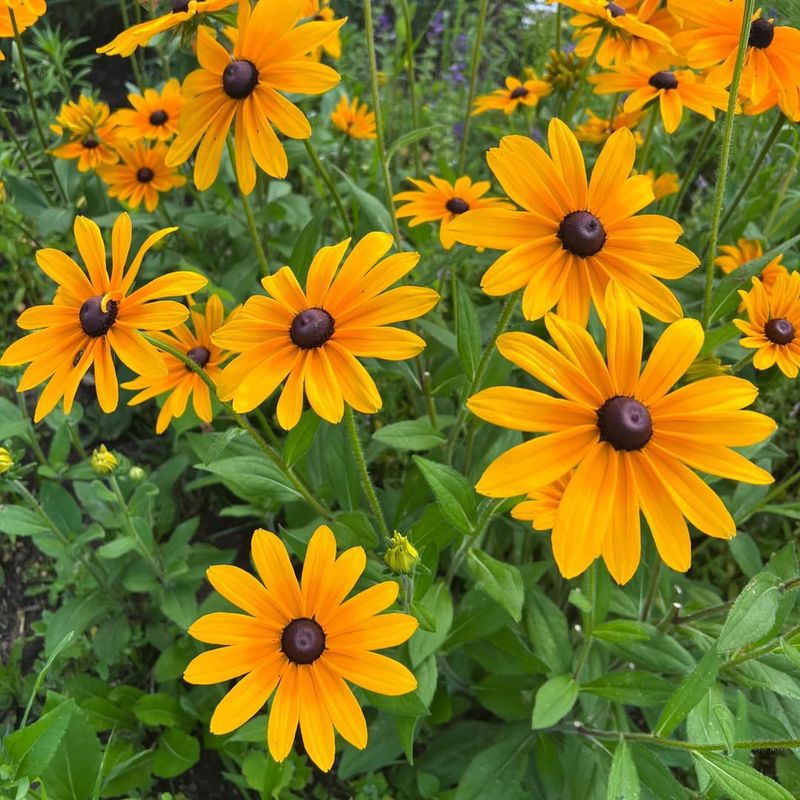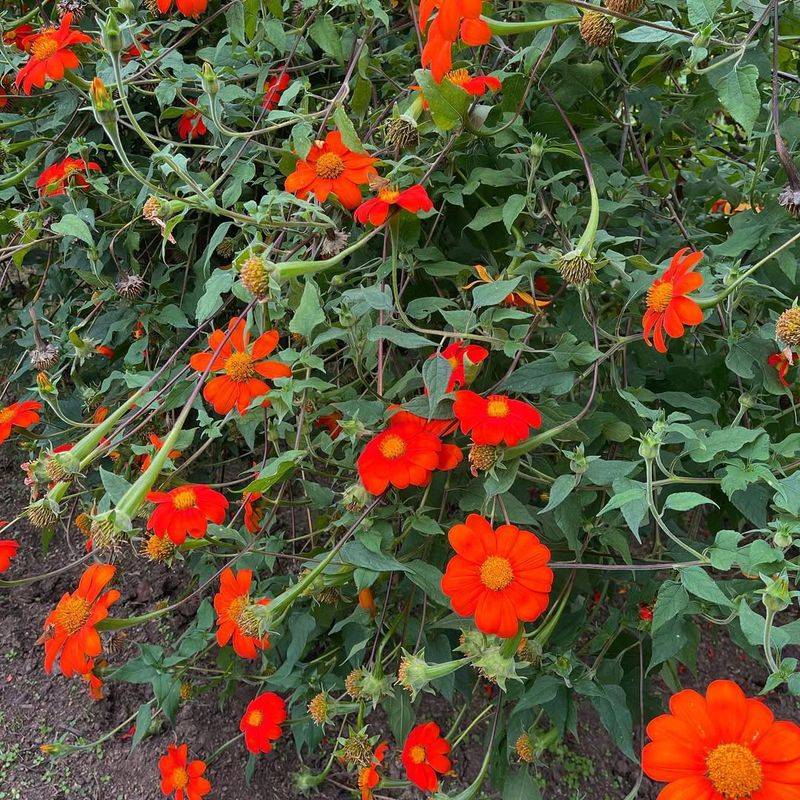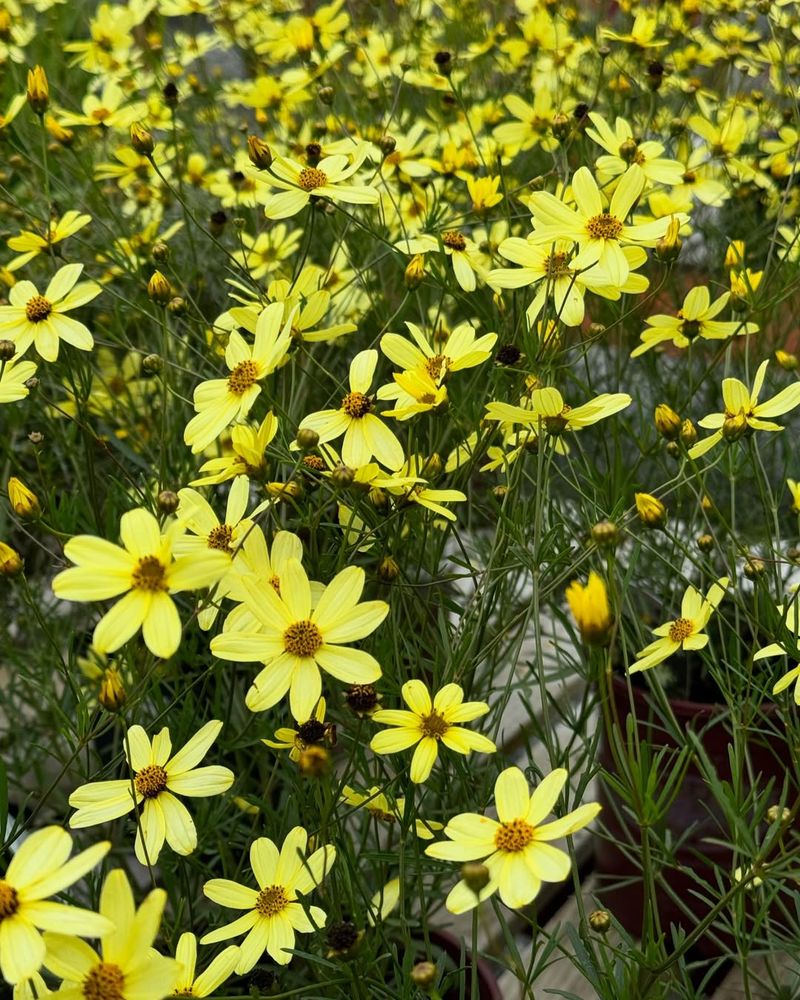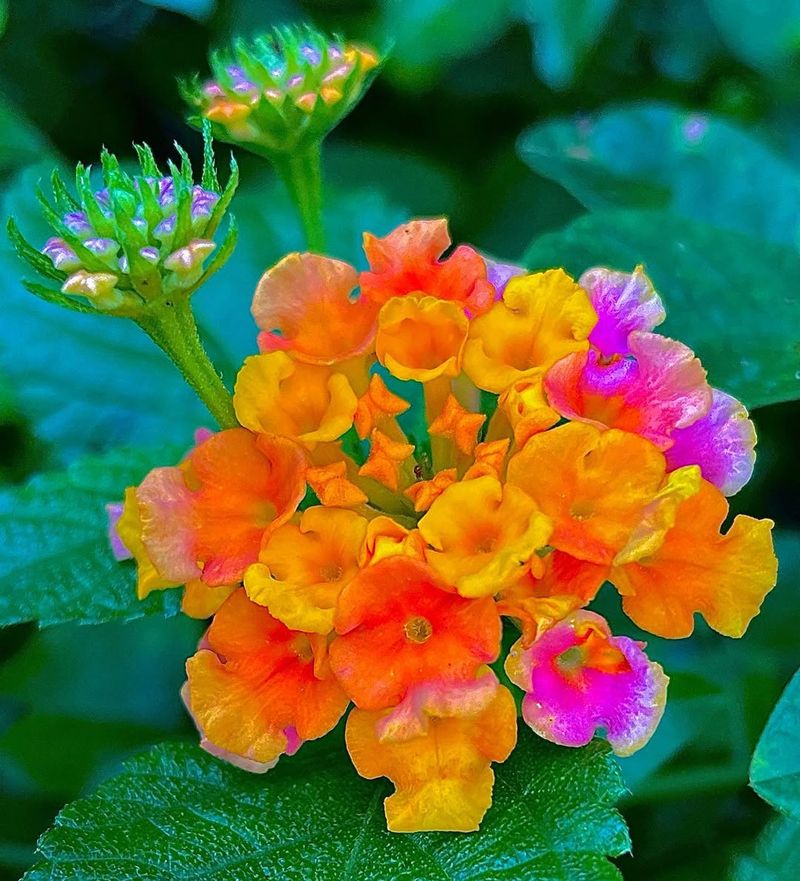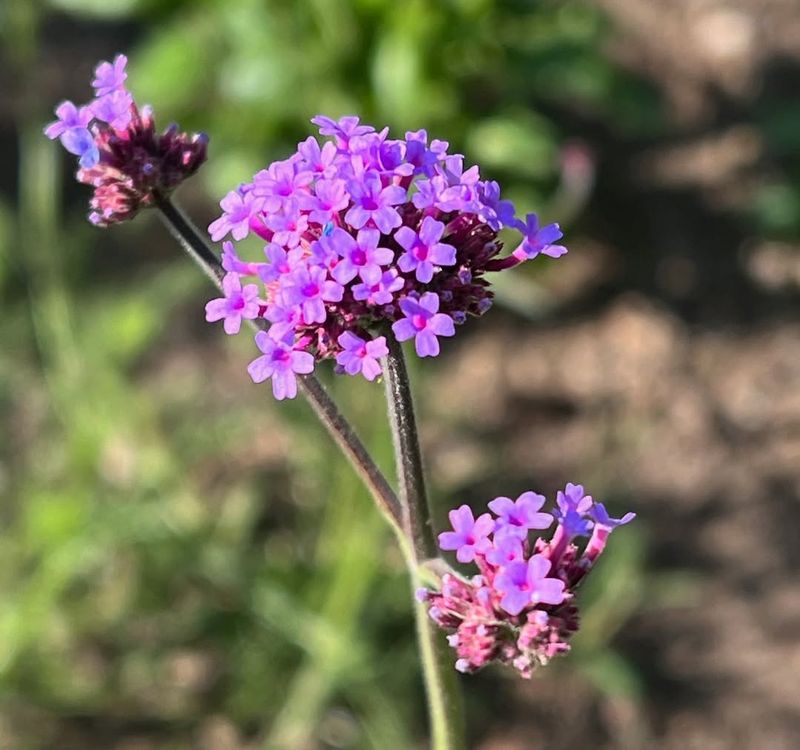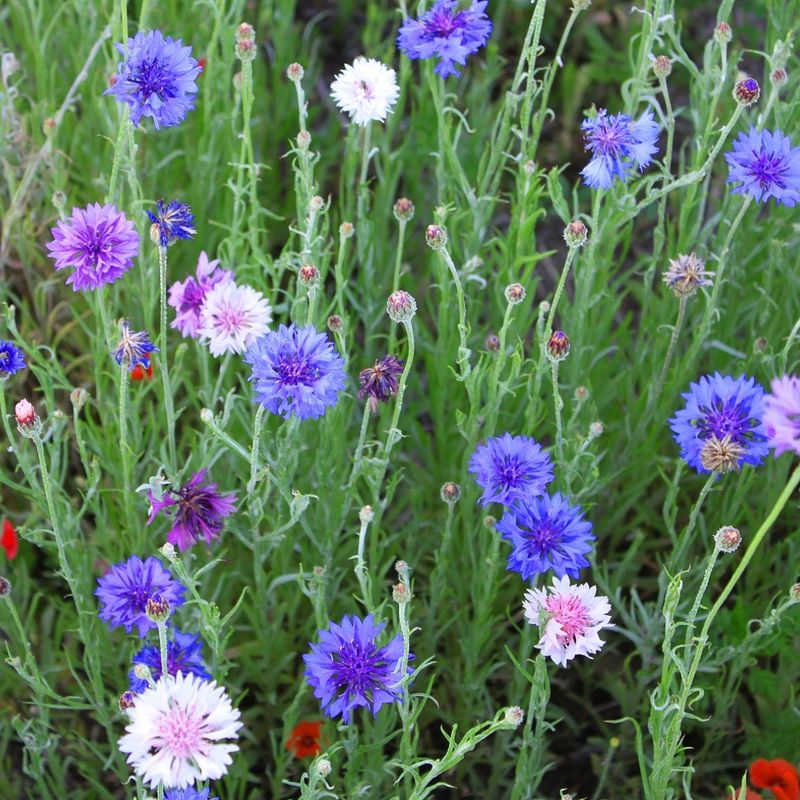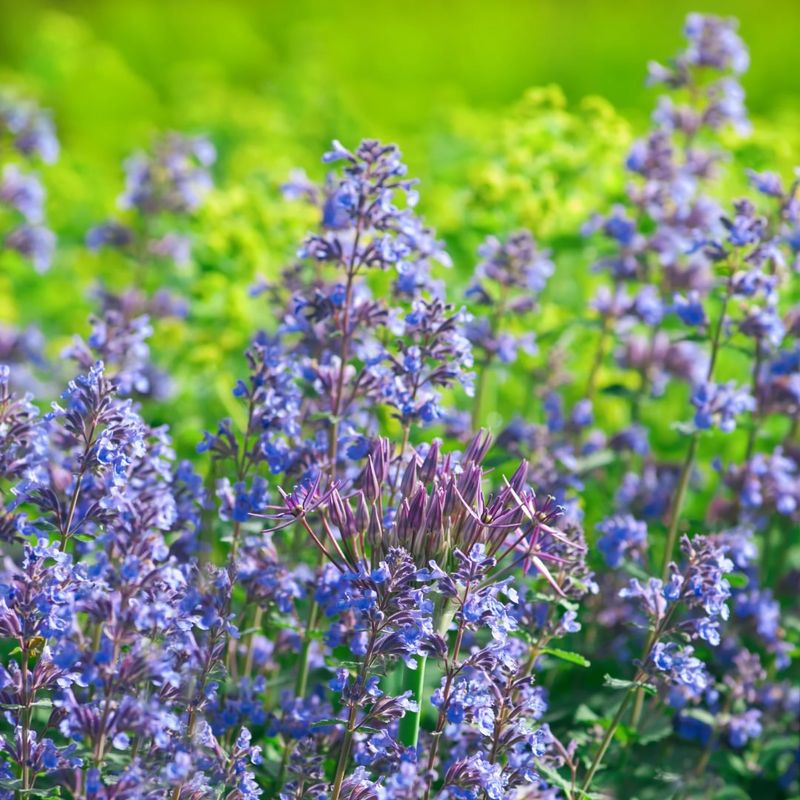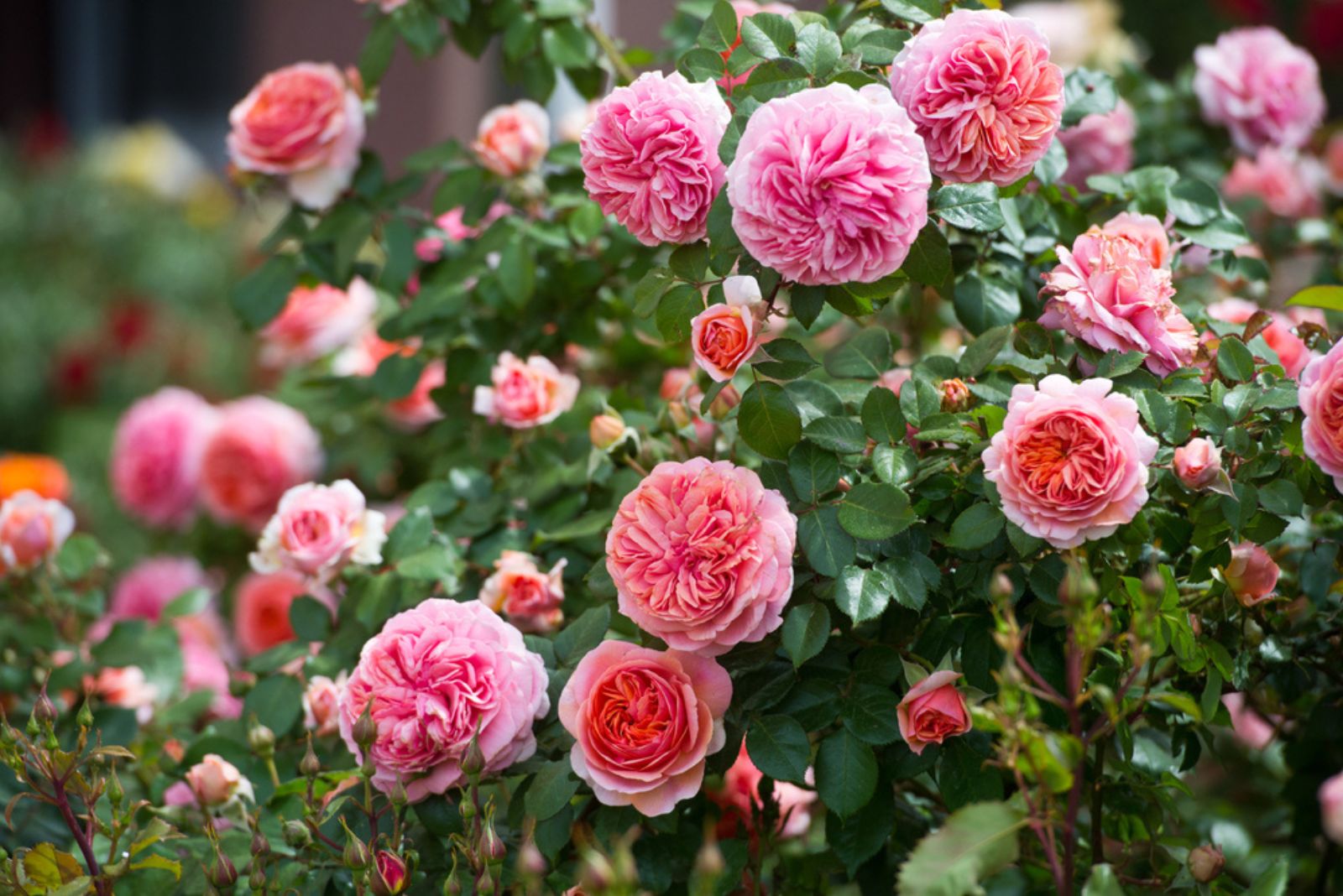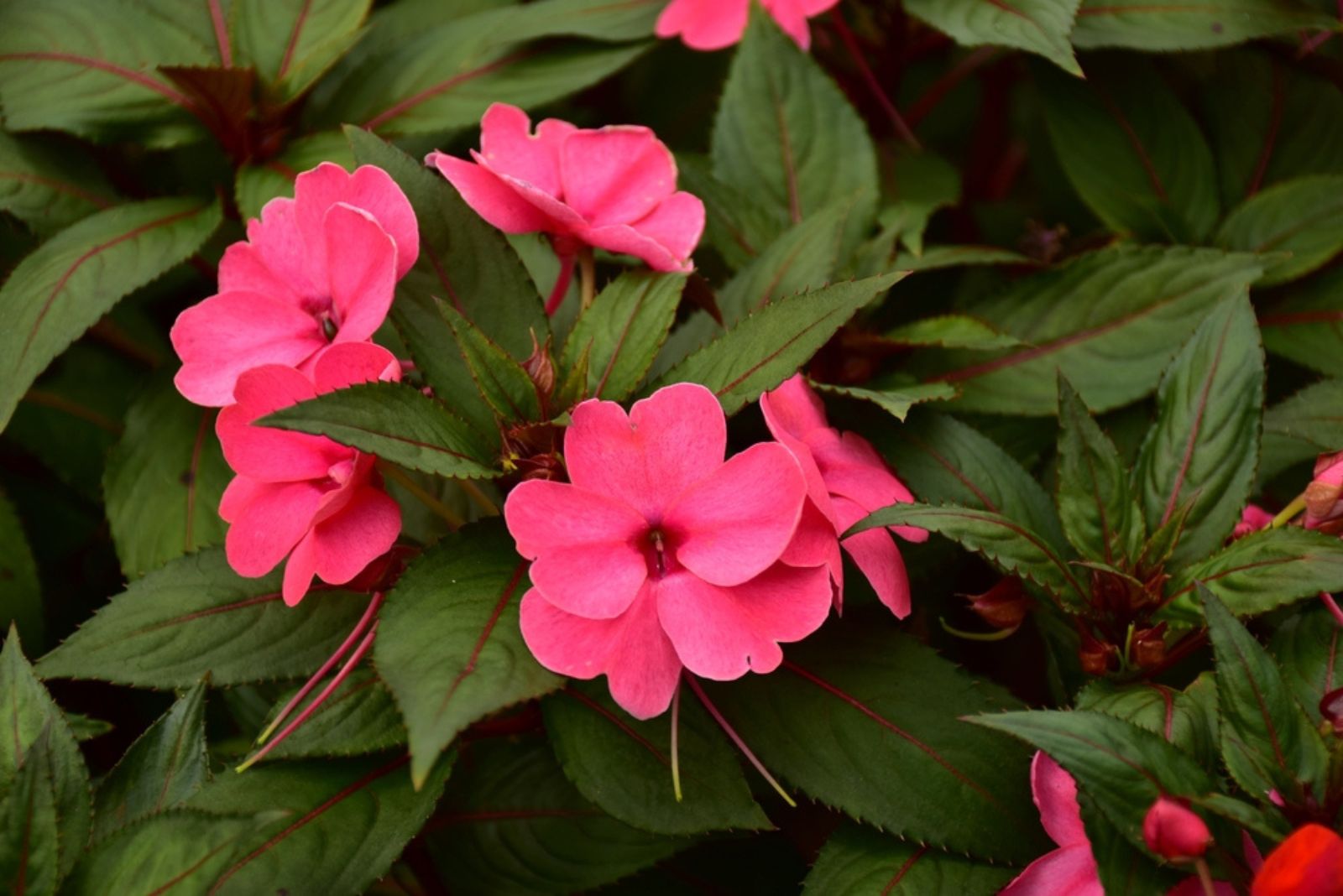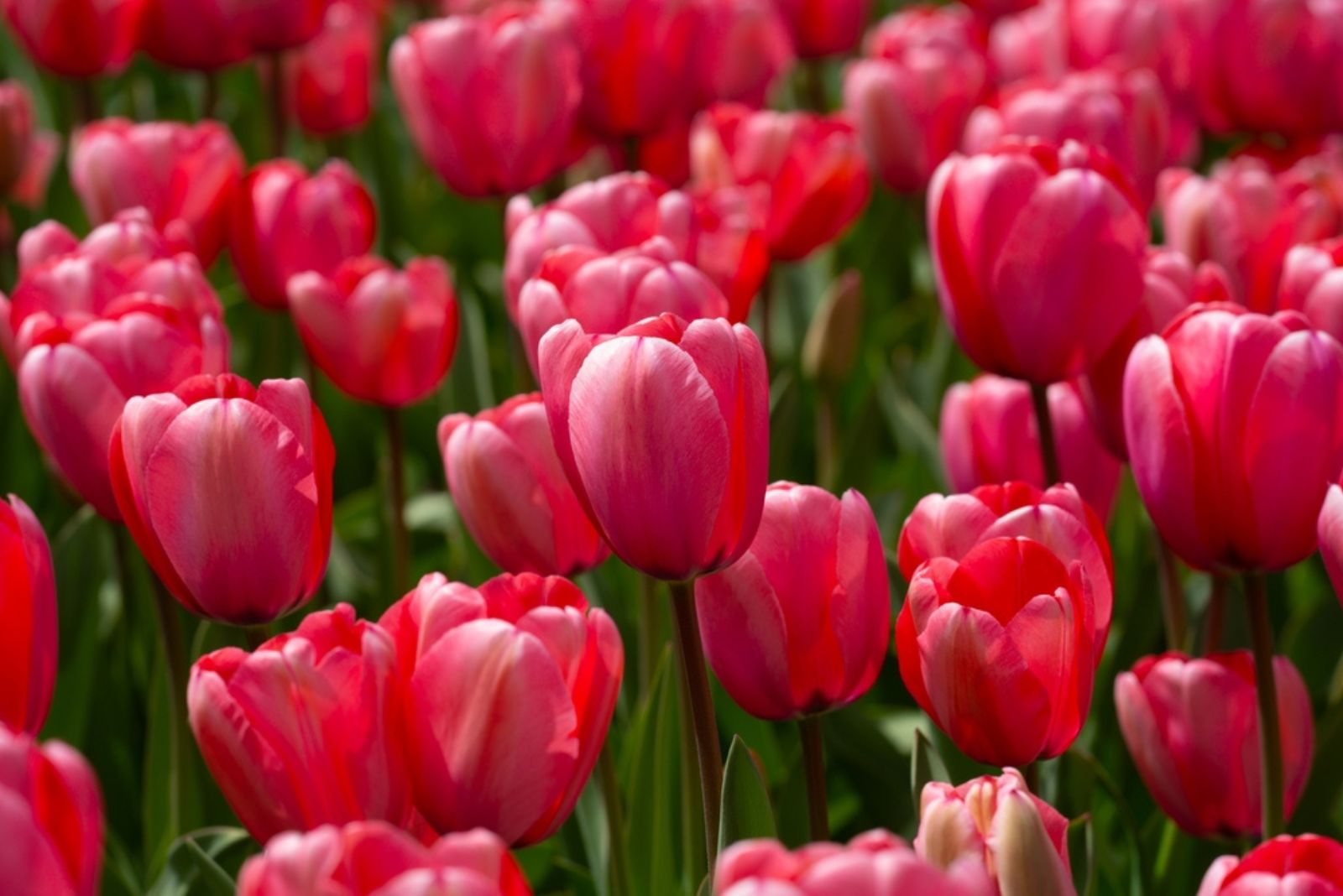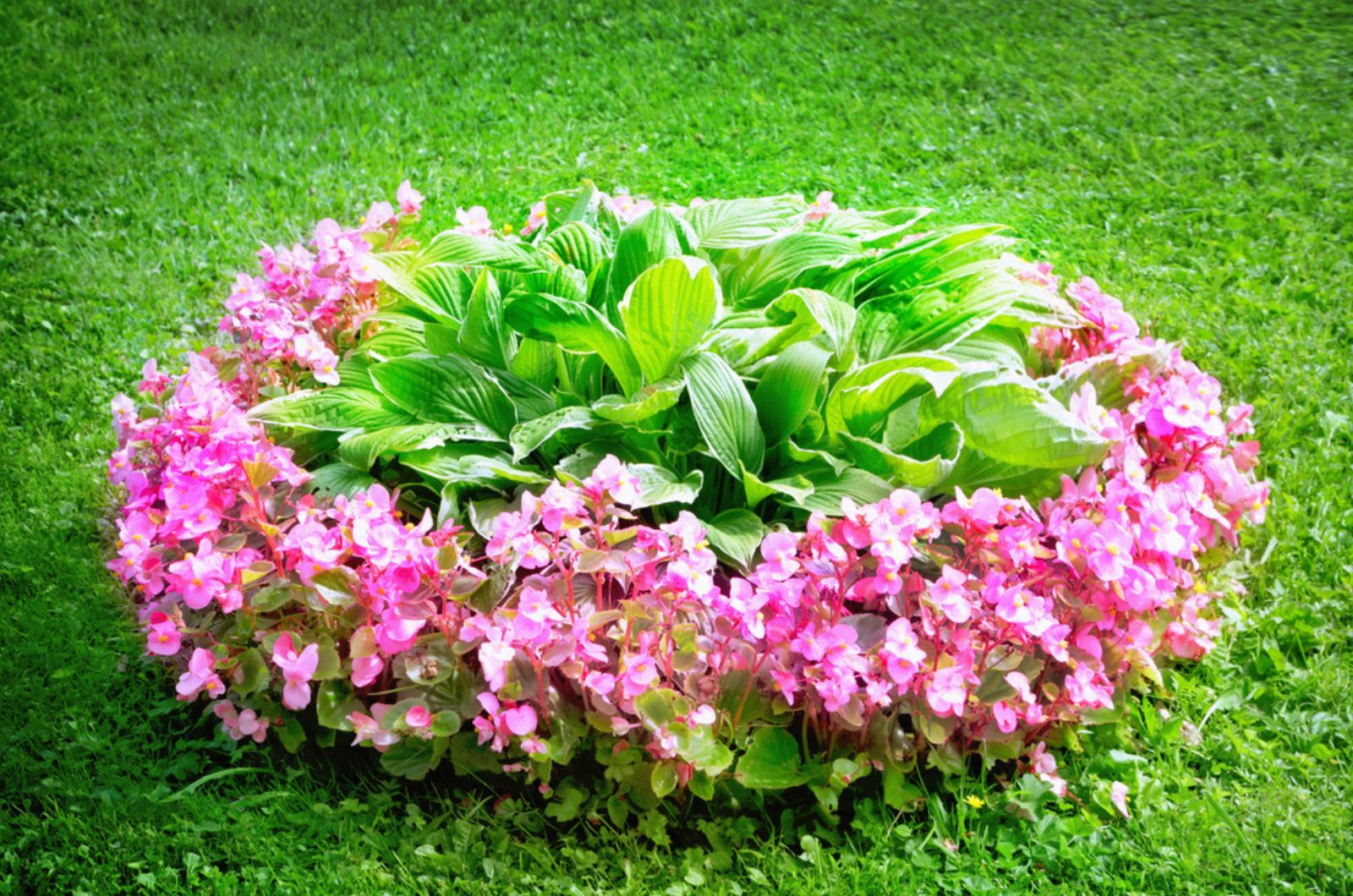A bee-safe garden starts with the right flowers, and starting them indoors gives you a head start. Some flowers attract pollinators, while others don’t. This list covers 28 bee-friendly blooms to grow and 5 to avoid.
Each one adds color, texture, and nectar to keep your garden buzzing with life. With simple tips and easy-growing options, creating a pollinator-friendly space has never been easier.
1. Bee Balm
Start this plant indoors to ensure early blooms. Bee balm flowers attract pollinators with their bright and bold colors.
These flowers are known for their fragrant aroma which draws in bees. Plant them in well-drained soil and provide plenty of sunlight.
Water regularly but avoid overwatering, as it can lead to root rot. Pruning dead stems encourages re-blooming.
2. Lavender
Aromatic and elegant, lavender offers more than just beauty. This flower is a magnet for bees in search of nectar.
Start seeds indoors to extend the flowering season. Lavender prefers sandy, well-drained soil and plenty of sunlight.
Water moderately, allowing the soil to dry between waterings. Pruning after the first bloom encourages a second flowering.
3. Sunflower
Growing sunflowers indoors gives them a strong start. These towering flowers are adored by bees for their abundant pollen.
Rich in nectar, sunflowers support pollinator health. Choose a sunny spot and well-drained soil for planting.
Water deeply but infrequently, and consider staking taller varieties. Sunflowers’ cheerful presence and beneficial traits make them a garden essential.
4. Cosmos
Cosmos are perfect for a bee-friendly garden. Their daisy-like flowers provide ample nectar.
Start seeds indoors to bring vibrant color to your outdoor space. They thrive in full sun and well-drained soil.
Cosmos are drought-tolerant, requiring minimal watering once established. Deadheading encourages continuous blooms.
5. Borage
Known for its star-shaped blooms, borage is a bee favorite.
Plant indoors to give borage a head start in your garden. It thrives in well-drained soil and full sun.
Borage requires moderate watering, and its edible flowers add a unique twist to dishes. Encourage bushier growth with regular pinching.
6. Zinnia
Zinnias are loved by bees for their bright, varied colors and easy-to-access nectar. Start seeds indoors to enjoy early blooms in your garden. Zinnias prefer full sun and well-drained soil.
Consistent watering helps them thrive, but allow the soil to dry between waterings. Removing spent flowers promotes further blooming.
These cheerful flowers offer not only beauty but also support pollinators. With minimal care, zinnias add vibrant life to any garden.
7. Echinacea
Echinacea, or coneflower, benefits both bees and gardens alike.
Start seeds indoors for an early start. These perennials thrive in full sun and well-drained soil.
Echinacea requires minimal watering once established, making it drought-tolerant. Prune dead flowers to encourage more blooms.
Their spiky centers and vibrant petals attract bees, ensuring a lively garden scene. Echinacea is a reliable, long-lasting choice for pollinator-friendly planting.
8. Snapdragon
Snapdragons captivate with their unique shape and are a magnet for bees.
Start indoors for earlier blooms in your garden. These flowers thrive in cool temperatures and well-drained soil.
Provide regular watering, especially during dry spells, to maintain healthy growth. Pinch stems to encourage bushier plants.
With their playful petals, snapdragons add character and bee appeal to any garden setting.
9. Alyssum
Alyssum, with its tiny blooms, offers a delightful nectar source for bees.
Begin growing indoors to enjoy early spring flowers. Alyssum prefers cool climates and well-drained, moist soil.
Regular watering keeps them healthy, but avoid waterlogged conditions. Trim back after blooming for renewed growth.
These mound-forming flowers create excellent ground cover and attract pollinators with their sweet scent.
10. Calendula
Calendula, or pot marigold, is a valuable addition to any bee-friendly garden.
Start indoors for a head start on their cheerful blooms. They enjoy full sun and well-drained soil.
Water thoroughly, allowing the soil to dry between sessions. Deadheading promotes extended flowering.
Calendula’s bright blossoms are not only attractive to bees but also provide vibrant color to garden spaces.
11. Foxglove
Foxgloves offer a striking vertical element and are adored by bees for their nectar-rich flowers.
Starting indoors ensures a flourishing display come spring. They thrive in partial shade and well-drained soil.
Water moderately, keeping the soil consistently moist. Support taller stems to prevent toppling.
With their towering presence, foxgloves bring elegance and bee-friendly blooms to gardens.
12. Marigold
Marigolds are garden staples that provide food for bees and color for gardeners.
Start seeds indoors to guarantee robust plants. They thrive in full sun and well-drained soil.
Marigolds need regular watering but allow the soil to dry slightly between sessions. Pinch off spent blooms for continuous flowering.
These hardy flowers are not only easy to grow but also beneficial for pollinators.
13. Lupine
Lupines offer lush spikes of flowers that are irresistible to bees.
Starting indoors gives them a jumpstart in the growing season. Lupines prefer sunny locations and well-drained soil.
Water regularly, especially during dry periods, to maintain their vigor. Support is needed for taller varieties to prevent wind damage.
With their bold colors and bee-friendly nature, lupines are a standout addition to any garden.
14. Salvia
Salvia is a versatile addition known for attracting bees and other pollinators.
Begin seeds indoors to extend the flowering period. They thrive in full sun and well-drained soil.
Salvia requires consistent watering, but too much can harm them. Trim back after blooming for fresh growth.
Their striking flowers and pollinator appeal make them a valuable garden choice.
15. Anise Hyssop
Sweet and fragrant, anise hyssop is a favorite among bees.
Start seeds indoors for a robust start. They thrive in full sun and sandy, well-drained soil.
Water moderately, avoiding overly wet conditions. Deadhead to encourage more blooms.
Their aromatic leaves and spikes of flowers make anise hyssop a delight for both bees and gardeners.
16. Cleome
Cleome’s distinctive flowers are not only eye-catching but also bee-friendly. Begin indoors for earlier blooms. They prefer sunny spots and well-drained soil.
Water regularly, but ensure good drainage to prevent root problems. Support taller stems as needed.
With their unique appearance and appeal to bees, cleomes add intrigue to any pollinator garden.
17. Petunia
Petunias are popular for their colorful blooms and attractiveness to bees. Start seeds indoors for an early show of flowers. They thrive in sunny areas and well-drained soil.
Regular watering keeps them thriving, but avoid soggy conditions. Deadhead to promote continuous blooming.
These versatile flowers bring life and bee-friendly nectar to any garden arrangement.
18. Rudbeckia
Rudbeckia, or black-eyed Susan, offers vibrant blooms that attract bees. Start seeds indoors to enjoy early summer flowers. They thrive in full sun and well-drained soil.
Rudbeckia requires moderate watering and benefits from deadheading. Their durable nature makes them a reliable garden choice.
Bright and cheerful, these flowers add color and support pollinators throughout the season.
19. Tithonia
Also known as Mexican sunflower, tithonia is a bee magnet with its bold blooms. Starting indoors gives them a healthy start. They prefer sunny spots and well-drained soil.
Water regularly, especially during dry spells, to ensure robust growth. Pruning encourages more flowering.
Their vibrant flowers provide nourishment to bees and add drama to garden settings.
20. Nasturtium
Nasturtium’s peppery blooms are a favorite for both chefs and bees. Begin indoors to start the growing season early. These flowers thrive in poor soil and full sun.
Water sparingly, as nasturtiums do well in drier conditions. Their trailing habit makes them ideal for hanging baskets.
With edible flowers and bee appeal, nasturtiums are a versatile and delightful choice.
21. Coreopsis
Coreopsis is a hardy option with glowing blooms that attract bees. Start seeds indoors for a jumpstart. They thrive in full sun and well-drained soil.
Minimal watering is needed once established, making them drought-tolerant. Deadhead to prolong the blooming period.
Their cheerful flowers are not only beautiful but beneficial for pollinators.
22. Gaillardia
Gaillardia, or blanket flower, boasts striking blooms that bees adore. Plant indoors to get an early start. They prefer sunny locations and well-drained soil.
Regular watering is essential, especially in dry periods. Deadhead to encourage more flowers.
Their vibrant color and bee-friendly nature make them a standout in any garden arrangement.
23. Lantana
Lantana’s colorful clusters are irresistible to bees seeking nectar. Start seeds indoors for vibrant garden displays. They thrive in sunny spots and well-drained soil.
Moderate watering is needed, but avoid excessive moisture. Pruning encourages fresh blooms and neat growth.
These flowers offer beauty and sustenance to bees, enhancing any garden scene.
24. Verbena
Verbena’s delicate blooms provide continuous nectar for bees. Start indoors to prolong the flowering season. They prefer full sun and well-drained soil.
Water regularly, letting the soil dry between sessions. Pruning spent flowers maintains their beauty.
With their sprawling habit and bee-friendly nature, verbena adds grace and charm to gardens.
25. Bachelor’s Button
Bachelor’s buttons are easy to grow and favored by bees for their nectar. Start seeds indoors for a head start. These flowers thrive in full sun and well-drained soil.
Minimal watering is required once established, making them drought-resistant. Deadhead to encourage prolonged blooming.
Their cheerful blue flowers are a welcome addition to any pollinator-friendly garden.
26. Sweet Pea
Sweet peas offer fragrant blooms that are inviting to bees. Begin indoors to enjoy early flowers. They thrive in cool climates and well-drained soil.
Regular watering ensures healthy growth, but avoid waterlogged conditions. Support climbing varieties with trellises. Their sweet scent and bee appeal make sweet peas a delightful garden choice.
27. Yarrow
Yarrow’s clusters provide a steady source of nectar for bees. Start seeds indoors to get a head start. They thrive in sunny locations and well-drained soil.
Water sparingly, as yarrow is drought-tolerant. Deadheading encourages further blooming. Their feathery foliage and bee-friendly blooms make yarrow a versatile addition to gardens.
28. Catmint
Catmint’s aromatic foliage and flowers are a hit with bees. Start seeds indoors for an early start. They prefer full sun and well-drained soil.
Moderate watering is sufficient, allowing the soil to dry between sessions. Trim back to encourage bushier growth.
With its fragrant charm and pollinator appeal, catmint enhances any garden landscape.
29. Hybrid Tea Roses
These roses are bred to be picture-perfect, but that comes at a cost—no strong scent, no open centers, and almost no nectar or pollen.
Bees might check them out, but they won’t find anything useful. If you love roses but want to keep pollinators happy, go for single-petal or wild rose varieties instead.
30. Geraniums
These flowers have little to no nectar, and their pollen is tough for bees to access. While they make great container plants, they won’t do anything to support your local pollinators.
If you’re set on geraniums, consider mixing in some lavender or salvia to keep the bees around.
31. Impatiens
A go-to for gardens with little sun, but not the best choice for attracting bees. Their nectar levels are low, and their flowers aren’t structured for easy pollination.
They work well for adding color to flower beds, but if you’re looking to bring in bees, pair them with something like bee balm or coneflowers.
32. Tulips
A spring favorite, but not a pollinator favorite. Tulips don’t produce much nectar, and their pollen isn’t easily accessible.
Since they bloom early, they could be helpful in areas where food is scarce, but overall, bees won’t rely on them. If you want spring color and pollinator benefits, daffodils and crocuses are better options.
33. Begonias
These flowers thrive in pots and shaded areas, but they don’t do much for bees. Most varieties lack the open structure that pollinators need, and their nectar production is low.
If you’re adding begonias to your garden, consider planting some nearby wildflowers or herbs like thyme and oregano to make up for their lack of bee appeal.

